Future-Proof Workforce Housing: Lida Group’s High Quality Container Villages Feature Scalable Prefab Construction for Mega-Projects
2025-Jul-30 15:58:40
By Admin
1. Introduction
Mega-projects, such as large-scale infrastructure developments, energy installations, and urban renewal initiatives, are reshaping the global landscape. These ambitious undertakings require a massive workforce, often numbering in the thousands, to be deployed for extended periods. A critical challenge faced by project managers is providing suitable housing for this workforce—accommodation that is not only comfortable and safe but also adaptable to the evolving needs of the project and its workers.
Traditional workforce housing solutions have often fallen short. Temporary camps built with conventional construction methods are frequently plagued by long lead times, high costs, and inflexibility. They struggle to scale up or down as the project’s labor requirements change, leading to inefficiencies and waste. Moreover, these structures often fail to meet modern standards for quality of life, affecting worker morale and productivity.
Lida Group, a leader in prefabricated construction since 1993, has emerged as a game-changer in addressing these challenges. With a diverse portfolio encompassing labor camps, steel structure buildings, container houses, and prefab houses, the company has a proven track record of delivering innovative, high-quality housing solutions. Holding prestigious certifications such as ISO 9001, ISO 14001, ISO 45001, and EU CE certification (EN 1090), Lida Group combines engineering excellence with a commitment to sustainability. Its global network of seven subsidiaries and overseas branch offices enables it to support mega-projects worldwide. Central to its offering is the development of high-quality container villages—future-proof workforce housing that leverages scalable prefab construction to meet the dynamic demands of large-scale projects.
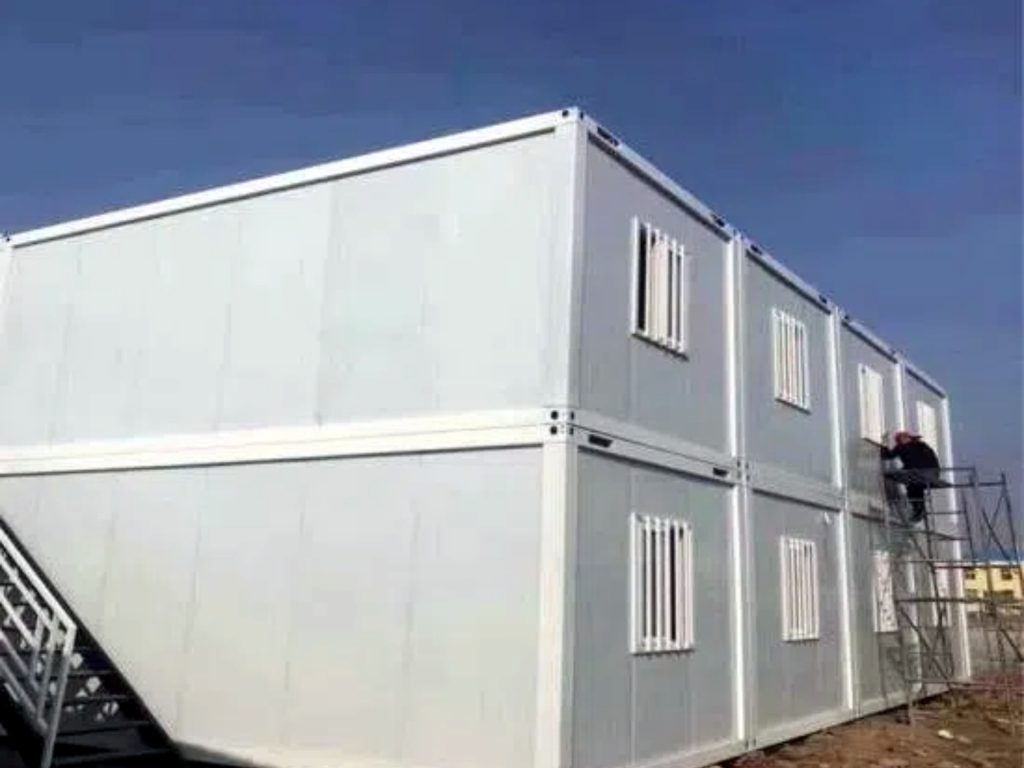
2. The Challenges of Workforce Housing in Mega-Projects
2.1 Fluctuating Labor Demands
Mega-projects are characterized by phases of varying intensity, each with distinct labor requirements. During the initial construction phase, a surge in workers may be needed to lay foundations and erect structures. As the project progresses to finishing stages, the workforce may shrink or shift in composition, with more specialized tradespeople required. Traditional housing solutions, which are often built to a fixed capacity, struggle to accommodate these fluctuations.
Over-provisioning housing during lulls in labor demand leads to wasted resources and increased costs, as empty units still require maintenance and utilities. Conversely, under-provisioning during peak periods results in overcrowding, which compromises safety and living conditions. This lack of scalability can disrupt project timelines, as workers may struggle to find suitable accommodation, leading to delays in staffing critical phases.
2.2 Remote and Challenging Locations
Many mega-projects are situated in remote or harsh environments—from deserts and mountainous regions to coastal areas prone to extreme weather. Building traditional housing in these locations is logistically complex and expensive. Transporting materials to remote sites can be costly and time-consuming, especially in areas with poor infrastructure. Extreme temperatures, high winds, or heavy rainfall can further delay construction and damage structures, requiring frequent repairs.
In such environments, ensuring access to basic amenities like clean water, reliable electricity, and sanitation is also a challenge. Traditional housing often relies on local infrastructure that may be underdeveloped or non-existent, making it difficult to provide a safe and healthy living environment for workers.
2.3 Quality of Life and Worker Productivity
The quality of workforce housing directly impacts worker productivity and retention. Poor living conditions—such as overcrowded rooms, inadequate ventilation, lack of privacy, or limited access to recreational facilities—can lead to low morale, increased absenteeism, and higher turnover rates. In mega-projects, where skilled workers are in high demand, losing personnel can be costly, as it requires time and resources to recruit and train replacements.
Workers on mega-projects often spend extended periods away from their families, making a comfortable and supportive living environment even more important. Traditional housing solutions frequently fail to address these needs, focusing solely on basic shelter rather than fostering a sense of community or well-being. This oversight can have a tangible impact on project outcomes, as a happy and healthy workforce is more likely to be productive and committed.
2.4 Sustainability and Environmental Impact
Mega-projects are under increasing scrutiny to minimize their environmental footprint, and workforce housing is no exception. Traditional construction methods for temporary housing generate significant waste, from excess materials to construction debris. The transportation of materials to remote sites also contributes to carbon emissions. Once the project is complete, these structures are often demolished, sending more waste to landfills and negating any short-term efforts to reduce environmental impact.
In addition, traditional housing may rely on fossil fuels for heating and electricity, further increasing carbon emissions. In sensitive ecosystems, such as coastal areas or wildlife habitats, the construction and operation of workforce housing can disrupt local flora and fauna, violating environmental regulations and damaging the project’s reputation.

3. Lida Group’s Scalable Prefab Construction: The Foundation of Future-Proof Housing
3.1 Modular Container Design
At the core of Lida Group’s future-proof workforce housing is its modular container design. These housing units are built using repurposed or newly manufactured steel shipping containers, which are modified and outfitted in controlled factory environments. The modular approach allows for standardized production, ensuring consistent quality across all units.
Each container is designed to function as a self-contained living space, with options ranging from single-occupancy units to family-sized accommodations. Units can be easily combined or stacked to create larger structures, such as dormitories, communal kitchens, or recreation centers. This flexibility enables the housing village to be customized to the specific needs of the project, whether it requires 50 units or 500.
The steel construction of the containers makes them durable and resistant to harsh environmental conditions, from extreme temperatures to high winds. They are also designed to be easily transported, even to remote locations, as they can be shipped via truck, train, or ship—eliminating many of the logistical challenges associated with traditional housing.
3.2 Rapid Deployment and Scalability
One of the key advantages of Lida Group’s prefab construction is its rapid deployment capability. Because the containers are manufactured off-site in factories, production can occur simultaneously with site preparation, significantly reducing the time it takes to set up housing. Once the site is ready, the prefabricated units are transported and assembled in a matter of days or weeks, rather than months—a critical benefit for mega-projects with tight timelines.
Scalability is built into the design. As labor demands increase, additional container units can be quickly transported to the site and integrated into the existing village. When the workforce shrinks, units can be disassembled and moved to other project sites or stored for future use. This ability to scale up or down ensures that housing capacity always matches demand, minimizing waste and reducing costs.
3.3 Factory-Guaranteed Quality and Safety
Lida Group’s factory-based production process ensures a high level of quality and safety that is difficult to achieve with on-site construction. Each container unit undergoes rigorous testing and inspection before leaving the factory, from structural integrity checks to the verification of electrical, plumbing, and HVAC systems. This quality control minimizes the risk of defects or failures once the units are deployed, reducing the need for costly repairs.
The units are designed to meet or exceed international safety standards, including fire resistance, structural stability, and ventilation requirements. In remote or harsh environments, additional safety features can be integrated, such as reinforced walls for protection against extreme weather, secure locking systems, and emergency exits. This focus on safety not only protects workers but also ensures compliance with local regulations, avoiding potential project delays.
3.4 Cost-Efficiency Throughout the Project Lifecycle
Lida Group’s scalable prefab construction offers cost savings at every stage of the project lifecycle. The standardized production process reduces material waste and labor costs associated with on-site construction. Mass production of components allows for bulk purchasing, lowering the cost of materials such as steel, insulation, and fixtures.
The rapid deployment of units reduces the time between investment and occupancy, ensuring that housing is available when workers arrive—avoiding costly delays in project staffing. The scalability of the design also eliminates the need for over-provisioning, as housing capacity can be adjusted in line with labor demands.
Furthermore, the durability of the container units extends their lifespan beyond a single project. After the mega-project is complete, units can be repurposed for other projects or sold, providing a return on investment that traditional temporary housing cannot match. This reusability also reduces the environmental impact of the housing, aligning with sustainability goals.
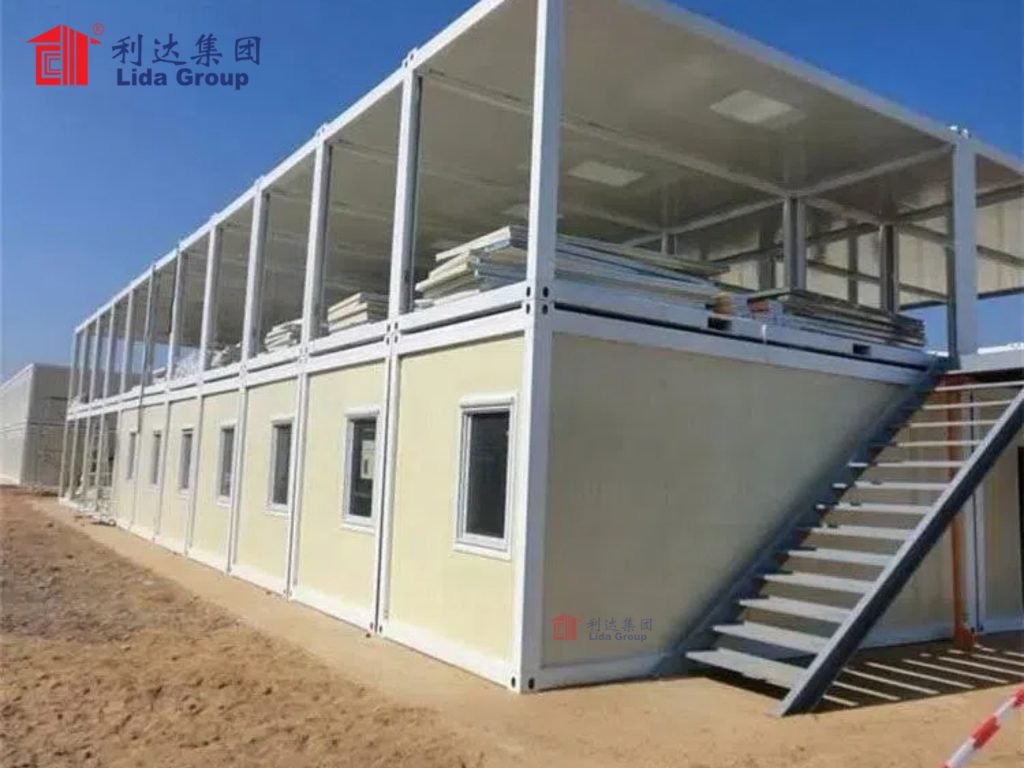
4. Features of Lida Group’s High-Quality Container Villages
4.1 Comfortable and Functional Living Spaces
Lida Group’s container villages prioritize comfort and functionality, recognizing that a well-designed living space is essential for worker well-being. Each unit is insulated to maintain a comfortable temperature in extreme climates, whether hot or cold. Large windows and ventilation systems ensure adequate airflow, preventing stuffiness and improving air quality.
The interior of each unit is thoughtfully designed to maximize space. Options include built-in storage, comfortable bedding, and workspace areas, allowing workers to relax and stay productive. Family units can be configured with separate sleeping areas and private bathrooms, providing the privacy needed for longer stays.
Communal spaces are also a key feature of the villages. These include shared kitchens equipped with modern appliances, dining areas, laundry facilities, and recreation rooms with seating, televisions, and gaming equipment. These spaces foster a sense of community, allowing workers to socialize and unwind after long shifts—boosting morale and reducing turnover.
4.2 Integrated Utilities and Infrastructure
Lida Group’s container villages are designed to operate independently of local infrastructure, making them ideal for remote locations. Solar panels can be installed on the roofs of units to generate electricity, supplemented by battery storage for use during nighttime or cloudy weather. This reduces reliance on fossil fuels and ensures a reliable power supply, even in areas with unstable grids.
Water management systems can include rainwater harvesting, water filtration units, and wastewater treatment facilities, ensuring access to clean water for drinking, cooking, and sanitation. In regions with limited water resources, low-flow fixtures and water recycling systems minimize consumption.
Heating and cooling are provided by energy-efficient HVAC systems, which can be controlled individually in each unit to meet personal preferences while reducing energy waste. Smart meters can be integrated to monitor utility usage, allowing for efficient resource management and cost tracking.
4.3 Adaptability to Project Phases and Worker Needs
The modular design of Lida Group’s container villages allows for easy adaptation to changing project phases and worker needs. During the initial construction phase, when a large unskilled workforce may be present, the village can consist primarily of dormitory-style units with shared facilities. As the project progresses and skilled tradespeople or supervisors arrive, more private units can be added.
For projects with rotating shifts, the village can be configured to accommodate workers arriving and departing at different times, with flexible check-in and check-out processes. Additional amenities, such as training rooms or medical clinics, can be integrated into the village as needed, ensuring that the housing solution evolves with the project.
The villages can also be customized to reflect the cultural needs of the workforce. For example, communal kitchens can be designed to accommodate different dietary requirements, and prayer rooms or cultural spaces can be included to respect religious or cultural practices. This adaptability ensures that all workers feel comfortable and respected, regardless of their background.
4.4 Safety and Security Measures
Safety and security are paramount in Lida Group’s container villages, particularly in remote or high-risk areas. The steel construction of the units provides a physical barrier against intruders, while secure locking systems on doors and windows prevent unauthorized access. Lighting is installed throughout the village, including pathways and communal areas, to deter criminal activity and ensure safe movement at night.
Fire safety features include smoke detectors, fire extinguishers, and sprinkler systems in each unit. Fire-resistant materials are used in construction, and clear evacuation routes are marked to ensure workers can exit safely in an emergency. Regular safety drills and training sessions are facilitated by the village’s design, which includes open spaces and designated assembly points.
In regions prone to natural disasters, such as earthquakes or hurricanes, the units can be reinforced with additional structural supports. Weather monitoring systems can be integrated to provide early warnings, allowing workers to take shelter in designated safe zones within the village.
4.5 Sustainability and Environmental Responsibility
Lida Group’s container villages are designed with sustainability at their core, aligning with the growing focus on environmental responsibility in mega-projects. The use of repurposed shipping containers reduces the demand for new steel, lowering the carbon footprint of production. Any new steel used is sourced from recycled materials where possible.
The villages are equipped with energy-efficient systems, from LED lighting to solar-powered electricity, reducing reliance on fossil fuels. Water conservation measures, such as low-flow fixtures and rainwater harvesting, minimize water usage. Waste management systems include recycling bins and composting facilities, diverting waste from landfills.
The modular design also reduces the environmental impact of construction. Because units are built off-site, there is less disruption to the local ecosystem during installation. Once the project is complete, the village can be disassembled, and the units can be reused or recycled—avoiding the waste associated with demolishing traditional housing.
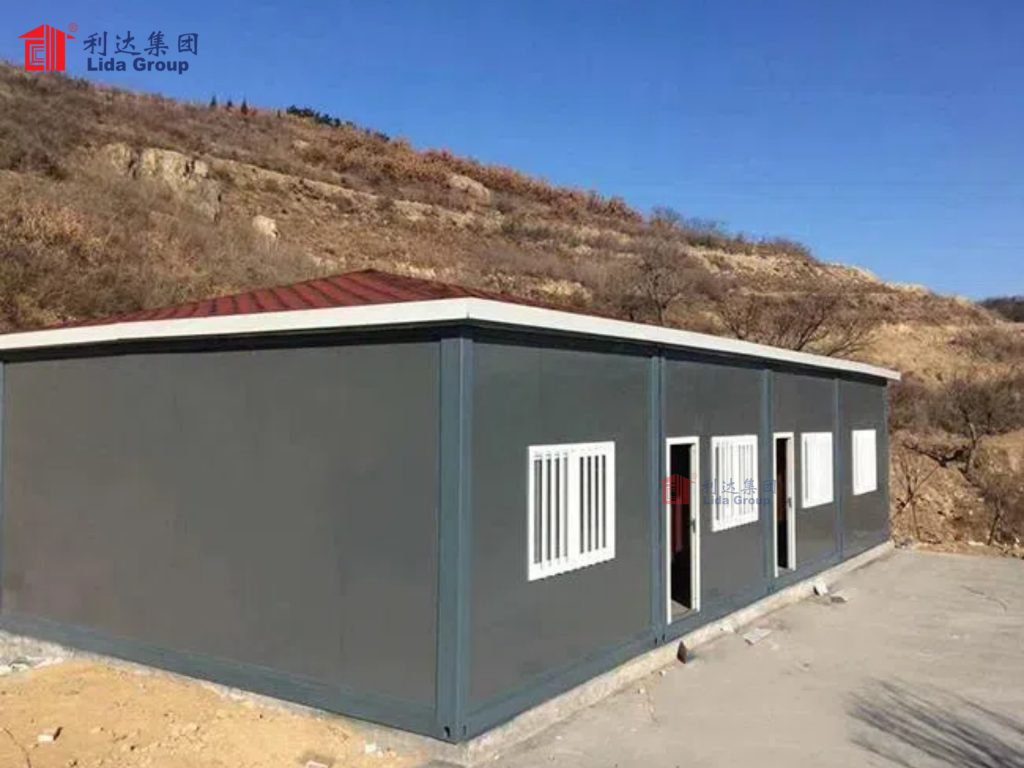
5. Case Studies: Lida Group’s Container Villages in Mega-Projects
5.1 Remote Energy Plant Construction Project
A major energy company was undertaking the construction of a remote solar power plant in a desert region, requiring housing for over 500 workers for a three-year period. The site was over 200 kilometers from the nearest town, with extreme temperatures reaching 45°C in summer and dropping to 5°C in winter. Traditional housing solutions were deemed too costly and time-consuming to transport and build.
Lida Group was contracted to provide a container village tailored to the harsh environment. The village consisted of 150 container units, including single-occupancy dormitories, communal kitchens, dining areas, and recreation rooms. Each unit was equipped with high-quality insulation and air conditioning to combat the heat, as well as heating systems for winter. Solar panels were installed on the roofs of communal buildings to supplement the power supply, reducing reliance on diesel generators.
The village was deployed in just six weeks, ensuring housing was ready when the first workers arrived. As the project progressed and labor demands fluctuated, additional units were added or removed—keeping costs in line with needs. Workers reported high satisfaction with the comfortable living conditions, and turnover rates were significantly lower than in previous projects using traditional housing. The energy company estimated cost savings of 30% compared to its original housing budget, with the added benefit of being able to reuse the units for another project once construction was complete.
5.2 Urban Infrastructure Renewal Project
A city-wide infrastructure renewal project required housing for 300 workers over a five-year period, with labor demands peaking during summer months. The project site was located in a densely populated area, with limited space for temporary housing. Traditional construction of a labor camp was deemed impractical due to space constraints and the need to minimize disruption to local residents.
Lida Group designed a compact container village that could be installed on a small plot of land adjacent to the project site. The village used stacked container units to maximize space, with 100 units providing accommodation for 300 workers. Communal facilities were integrated into the design, including a shared kitchen, laundry room, and outdoor recreation area with seating and 绿化 (greenery).
The village was built off-site and assembled in just three weeks, minimizing on-site disruption. The units were designed with sound insulation to reduce noise, ensuring minimal impact on neighboring residents. As labor demands fluctuated seasonally, units were added or removed, with excess units stored off-site. The project manager noted that the village’s scalability allowed for efficient resource allocation, while the high-quality living conditions improved worker productivity. At the end of the project, the units were disassembled and transported to another urban renewal project, extending their lifecycle and reducing waste.
5.3 Offshore Wind Farm Construction
An offshore wind farm project required housing for 200 workers during the construction phase, with the village located on a coastal site prone to high winds and saltwater corrosion. The workers were on rotating two-week shifts, requiring flexible accommodation that could be quickly cleaned and prepared between arrivals.
Lida Group’s solution was a container village built with corrosion-resistant materials to withstand the coastal environment. The units were reinforced to resist high winds, and elevated foundations protected against flooding. Each unit was designed for easy cleaning, with durable flooring and wipeable surfaces. Communal facilities included a large dining hall, laundry room, and fitness center to support worker health.
The village was deployed in eight weeks, with solar panels providing a portion of the electricity needs. The rotating shift system was facilitated by the village’s design, with dedicated staff able to prepare units between shifts in just a few hours. Workers praised the secure and comfortable living conditions, particularly the protection from the harsh coastal weather. The wind farm developer noted that the village’s durability and reusability made it a cost-effective solution, with plans to redeploy the units for future offshore projects.
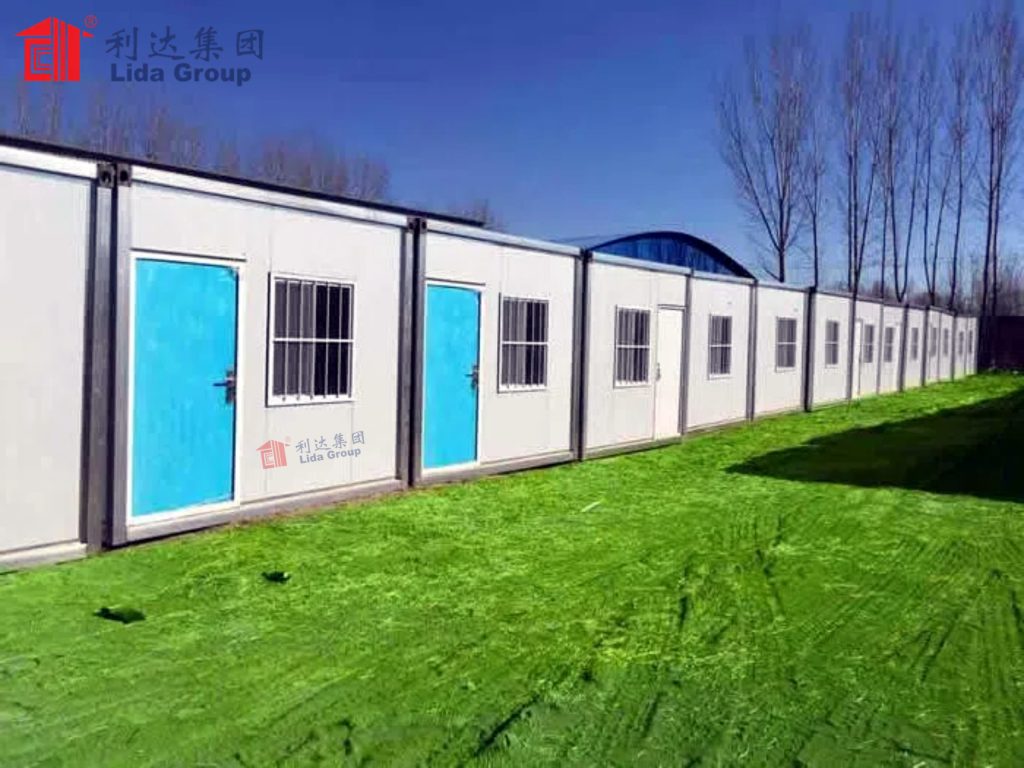
6. Comparison with Traditional Workforce Housing Solutions
6.1 Scalability and Flexibility
Traditional workforce housing, such as temporary camps built with wood or concrete, is typically designed for a fixed number of workers. Scaling up requires additional construction, which is time-consuming and expensive, while scaling down leaves unused capacity that still incurs costs. This inflexibility makes it difficult to adapt to the fluctuating labor demands of mega-projects.
In contrast, Lida Group’s container villages are inherently scalable. Units can be added or removed in days, allowing housing capacity to match labor needs precisely. This flexibility eliminates waste and ensures that resources are allocated efficiently throughout the project lifecycle.
6.2 Deployment Time and Cost
Traditional housing construction is often delayed by weather, supply chain issues, or labor shortages, leading to extended timelines and cost overruns. Transporting materials to remote sites adds further delays and expenses. For mega-projects with tight deadlines, these delays can disrupt staffing and push back project completion.
Lida Group’s prefab container villages are manufactured off-site, allowing production to proceed regardless of weather or on-site conditions. Deployment takes weeks rather than months, ensuring housing is ready when workers arrive. The standardized production process also reduces cost overruns, as materials and labor are planned and controlled in advance.
6.3 Quality of Life and Worker Satisfaction
Traditional workforce housing often prioritizes cost over comfort, resulting in overcrowded, poorly insulated units with limited amenities. This can lead to low worker satisfaction, high turnover, and reduced productivity. Communal spaces are often minimal, lacking the facilities needed to foster a sense of community.
Lida Group’s villages, by contrast, are designed with worker well-being at the forefront. Each unit offers adequate space, proper insulation, and modern amenities, ensuring a comfortable living environment. Communal areas are thoughtfully planned to include kitchens, recreation rooms, and outdoor spaces, encouraging social interaction and reducing feelings of isolation. These features contribute to higher worker satisfaction, lower turnover rates, and increased productivity—factors that directly impact the success of mega-projects. Workers in Lida Group’s villages report feeling more rested, motivated, and connected to their colleagues, leading to better performance on the job.
6.4 Environmental Impact
Traditional workforce housing has a significant environmental footprint. The construction process generates large amounts of waste, and the transportation of materials to remote sites increases carbon emissions. Once the project ends, these structures are often demolished, contributing to landfill waste. Additionally, reliance on fossil fuels for energy and inefficient resource management further exacerbate environmental harm.
Lida Group’s container villages, however, are designed to minimize environmental impact. The use of repurposed containers reduces the demand for new materials, and off-site manufacturing cuts down on construction waste. Energy-efficient systems and renewable energy sources lower carbon emissions, while water conservation measures reduce resource consumption. The reusability of units ensures that the environmental cost of production is spread over multiple projects, making them a far more sustainable option than traditional housing.
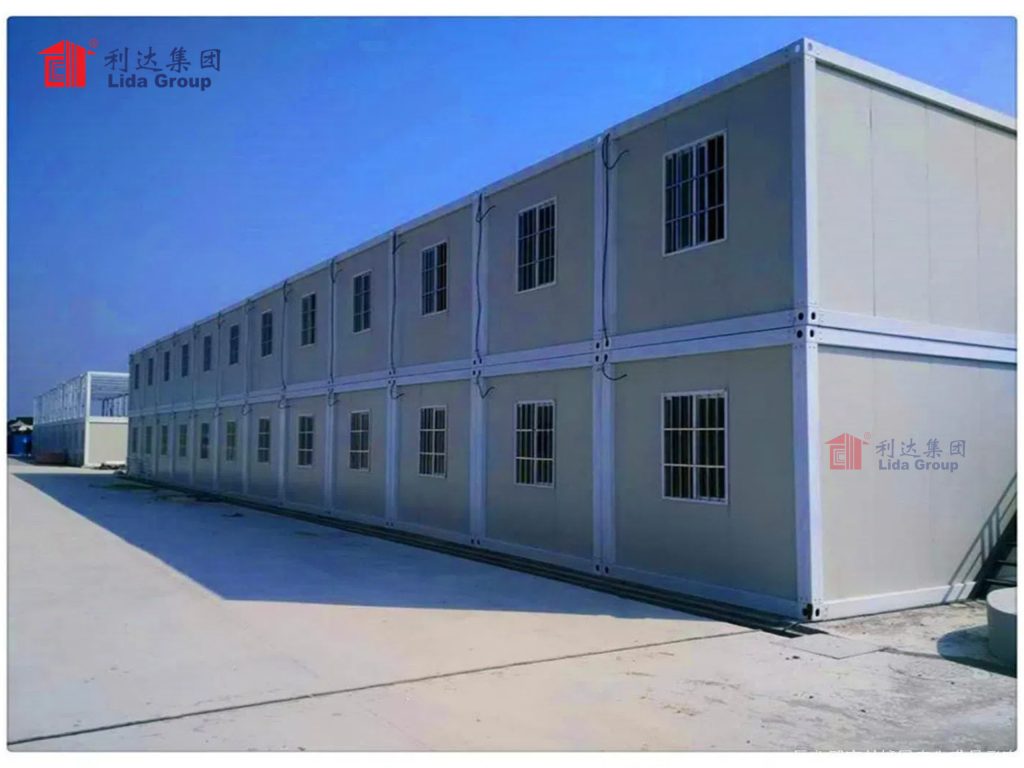
7. Future Trends in Future-Proof Workforce Housing
7.1 Integration of Smart Technologies
The future of workforce housing will see increased integration of smart technologies, and Lida Group is poised to lead this trend. IoT (Internet of Things) sensors can be installed in container units to monitor energy usage, water consumption, and indoor air quality, allowing for real-time optimization of resources. Smart thermostats and lighting systems can adjust based on occupancy, reducing energy waste.
Residents may also benefit from smart community management systems, such as mobile apps that allow workers to request maintenance, book communal facilities, or communicate with village staff. These technologies will enhance efficiency, improve the resident experience, and provide project managers with valuable data to further optimize housing operations.
7.2 Enhanced Sustainability Features
As environmental regulations become stricter and mega-projects face growing pressure to reduce their carbon footprint, Lida Group’s container villages will incorporate even more advanced sustainability features. This may include the use of biodegradable materials for interior finishes, improved solar panel efficiency, and the integration of green roofs or vertical gardens to enhance insulation and reduce stormwater runoff.
Waste management systems will become more sophisticated, with advanced recycling and composting facilities to minimize landfill waste. Water treatment technologies may also evolve to allow for full recycling of wastewater, making villages completely self-sufficient in water usage—particularly valuable for projects in water-scarce regions.
7.3 Customization for Diverse Workforce Needs
Mega-projects increasingly rely on a diverse workforce, with workers from different cultural backgrounds, skill levels, and family structures. Future container villages will be even more customizable to meet these diverse needs. For example, family units may include larger living spaces and child-friendly amenities, while single workers may have access to smaller, more affordable units.
Cultural considerations will also play a larger role in design, with communal spaces tailored to accommodate different dietary preferences, religious practices, and social customs. This level of customization will ensure that all workers feel valued and comfortable, regardless of their background, further improving satisfaction and retention.
7.4 Modular Expansion Beyond Housing
Lida Group’s modular construction approach has the potential to expand beyond housing to other critical facilities needed for mega-projects. Container-based offices, training centers, medical clinics, and even temporary schools for workers’ families can be integrated into the village, creating self-contained communities that meet all the needs of the workforce. This holistic approach will reduce the need for additional construction on-site, minimize disruption, and create a more cohesive living and working environment.
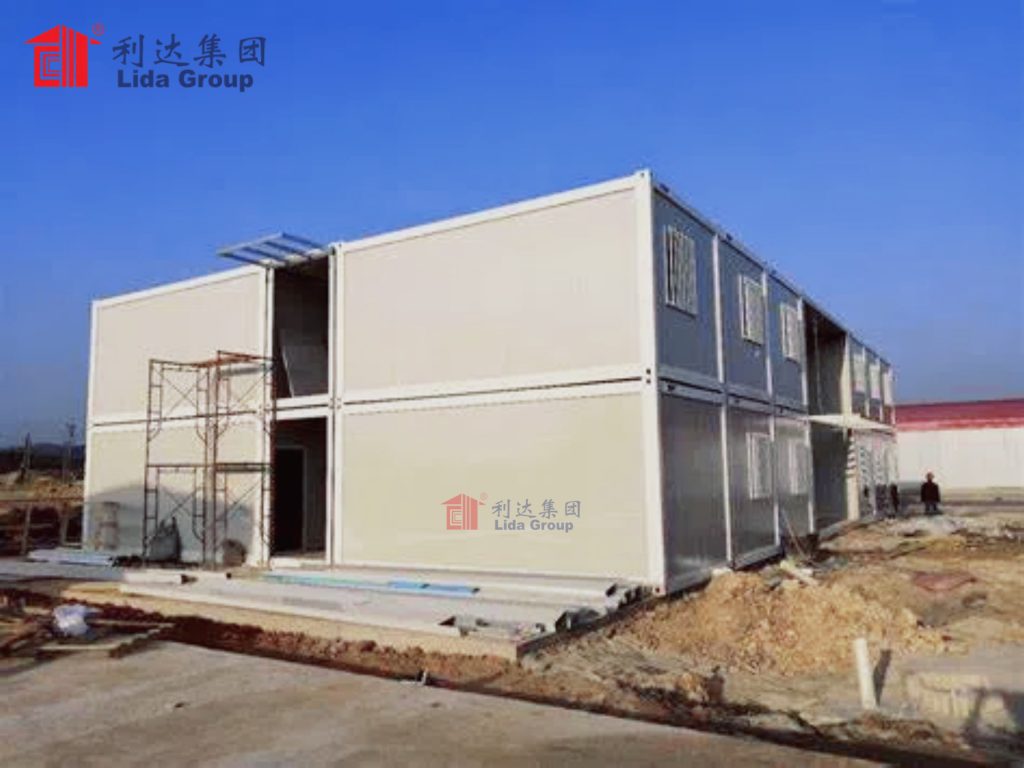
8. Conclusion
Mega-projects demand workforce housing solutions that are scalable, efficient, comfortable, and sustainable. Traditional housing options have failed to meet these requirements, often struggling with inflexibility, high costs, poor living conditions, and significant environmental impact. Lida Group’s high-quality container villages, built using scalable prefab construction, represent a future-proof solution to these challenges.
By leveraging modular container design, Lida Group delivers housing that can be rapidly deployed, easily scaled, and customized to meet the evolving needs of mega-projects. The villages offer comfortable living spaces, integrated utilities, and robust safety measures, ensuring a high quality of life for workers. Their sustainability features minimize environmental harm, aligning with the growing focus on responsible development.
Case studies from remote energy plants, urban renewal projects, and offshore wind farms demonstrate the effectiveness of Lida Group’s approach, highlighting cost savings, improved worker satisfaction, and successful adaptation to challenging environments. When compared to traditional housing, Lida Group’s villages excel in scalability, deployment speed, quality of life, and environmental responsibility.
Looking to the future, the integration of smart technologies, enhanced sustainability features, and increased customization will further strengthen the appeal of Lida Group’s container villages. As mega-projects continue to shape the global landscape, these future-proof housing solutions will play a critical role in ensuring the success of these undertakings by supporting a productive, satisfied, and well-housed workforce.
In conclusion, Lida Group’s high-quality container villages represent a paradigm shift in workforce housing for mega-projects. By combining innovation, scalability, and a commitment to worker well-being and sustainability, they set a new standard for what future-proof housing can and should be—proving that temporary accommodation doesn’t have to be temporary in quality or impact.
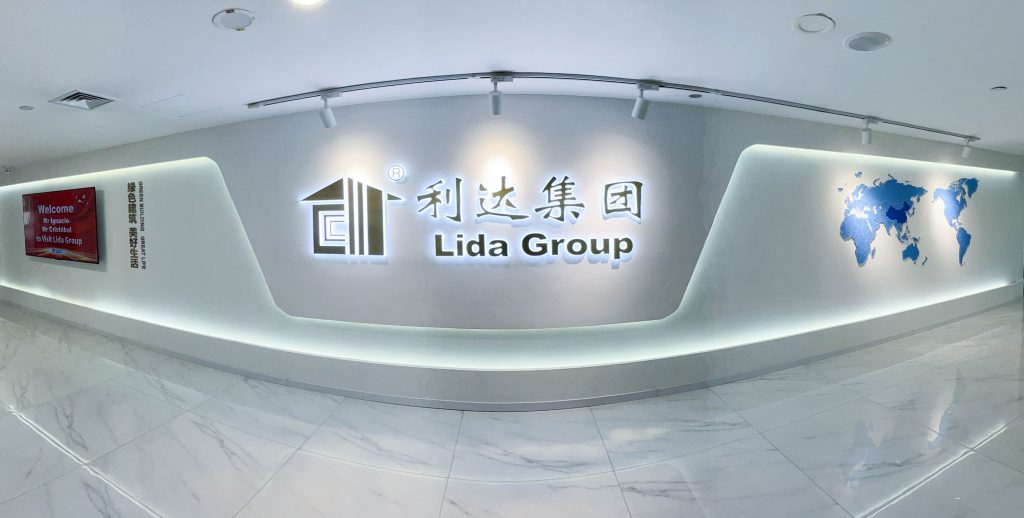
Related news
-
Smart Temp Communities: Lida Group Integrates IoT Systems into Temporary Container Buildings via Prefab Construction Networks
2025-07-30 15:15:25
-
Airport Modular Expansion: Lida Group Erects High Quality Container Terminals Using Rapid Prefab Construction Technology
2025-07-30 14:43:29
-
Film Industry Shift: Major Studios Adopt Lida Group's Temporary Container Buildings for Mobile High-Quality Production Villages
2025-07-30 14:11:48
contact us
- Tel: +86-532-88966982
- Whatsapp: +86-13793209022
- E-mail: sales@lidajituan.com


